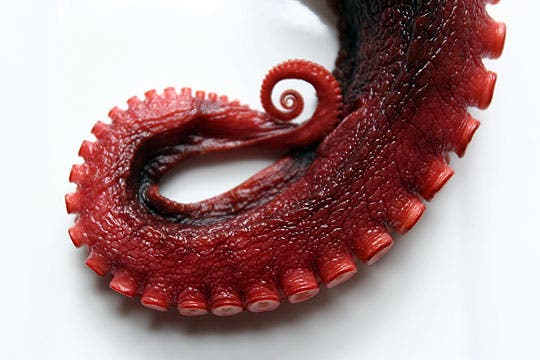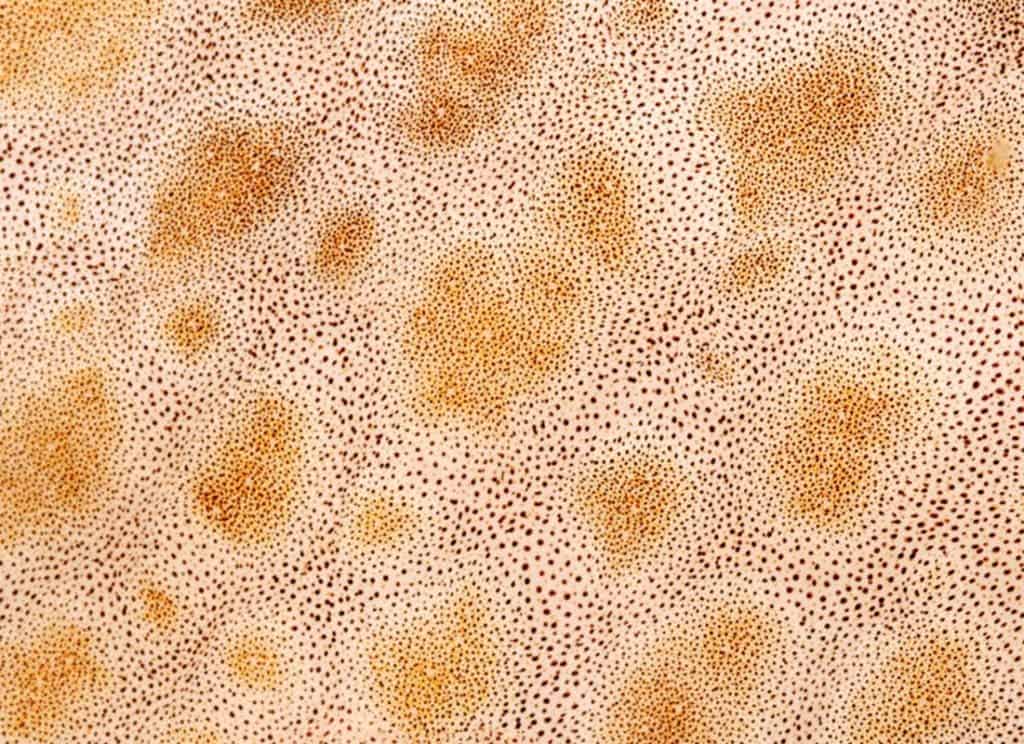Biologists have long suspected that cephalopods like the squid and cuttlefish have specialized proteins embedded in their skin, very similar to those found in the eye, which they can use to perceive light, and maybe even colour. Where previously attempts failed, a team at University of California at Santa Barbara now offers conclusive evidence that octopuses can ‘see’ with their skin. Namely, they can definitely perceive light characteristics like wavelengths, brightness and such, but not edges or contrast. So, you might as well add full body vision to the list of awesome octopus features: master of disguise, elegance in chaos, survival in sub-freezing Antarctic temperatures or special untangling switches. But hey, who’s counting anymore. As much as octopuses are weird, they’re just as fascinating!

Previously, in 2010, a team of researchers at the Marine Biological Laboratory in Woods Hole, Mass. reported that cuttlefish produce opsins in their skin. These are light-sensitive proteins typically found in the eye’s retina, which sense the light then trigger a biochemical reaction that sends a signal to the nervous system. Of all places, however, finding these in the skin was bizarre.
Dr. Roger Hanlon from the lab in Woods Hole then teamed with Thomas W. Cronin, a visual ecologist at the University of Maryland Baltimore County, for a closer look. They eventually discovered that in the skin of cephalopods – be them cuttlefish, squids or octopus – there are chromatophores embedded in the tissue, surrounded by muscle and nerves. When the muscles contract, the densely packed pigments expand (there are around 96,000 chromatophores per square inch of skin).
Using a novel set of molecular probes, Hanlon and Hole found the cuttlefish and squid makes opsins in the chromatophores. In the same pigments, they also found specialized enzymes typically found in the eye. All these pointed to the idea that these animals could sense light with their skin, but upon the ultimate test this proved not to be the case. When light was flashed on skin samples, they saw no response. They found themselves in the midst of a dilemma. What was going on?
Fast forward to present day, Todd Oakley and Desmond Ramirez of UCSB finally cracked it. Like the squid and cutterfish, octopuses too produce opsins in their skin, but not in the chromatophores. Instead, these are made in some hairlike nerve endings in the skin. Samples from a California two-spot octopus were taken to the lab, then had light shone on. When light hit the tissue, the chromatophores expanded and changed colour, but in the dark the pigments relaxed and reverted to their original hue. This suggests light sensors are connected to the chromatophores. So octopus can sense the light, even without any input from the eyes or brain. They also found rhodopsin, usually produced in the eye, within the octopus skin. All this evidence seems to suggest that octopuses can see with their skin, or at least discern colours.

It’s possible that this helps the octopus blend so well with its environment. Sure, it uses its eyes to discern what the surroundings look like, but it might be more efficient and effective at the same time to have the pigments and light-sensing proteins embedded in the skin. Ultimately, this sort of information triggers a neurotransmitter that “sets in motion a cascade of events that culminate in the addition of phosphate groups to a family of unique proteins called reflectins. This process allows the proteins to condense, driving the animal’s color-changing process.”
“Octopus skin doesn’t sense light in the same amount of detail as the animal does when it uses its eyes and brain,” lead author Desmond Ramirez of the University of California at Santa Barbara, said in a press release. “But it can sense an increase or change in light. Its skin is not detecting contrast and edge, but rather brightness.” The findings were reported in the Journal of Experimental Biology.
The team subjected the octopus skin to a variety of colours. The best response was with blue light, perhaps because the marine environment of the octopus is often blue-hued, which supports the above hypothesis.
Co-author Todd Oakley said, “We’ve discovered new components of this really complex behavior of octopus camouflage. It looks like the existing cellular mechanism for light detection in octopus eyes, which has been around for quite some time, has been co-opted for light sensing in the animal’s skin.”
Humans too can sense light with the skin. Previous research found that specialized cells and proteins inside the human skin react to ultraviolet light triggering tanning – a protective response meant to prevent skin damage. This is quite a bit different from the octopus, however.
“I’m very happy that they’ve succeeded,” said Dr. Hanlon for the NY Times, regarding the studies by Dr. Oakley and Mr. Ramirez. “And a little bit envious.” Hanlon will likely try again to see if he did something wrong the first time.


